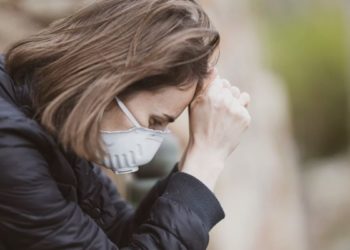CT of the chest, abdomen, and pelvis demonstrates low diagnostic yield in low-velocity trauma
1. In a retrospective review of over 100 patients who experienced low-velocity trauma with computed tomography (CT)-proven head or cervical spine injury but without evidence of other bodily injuries, completion of a CT scan of the chest, abdomen, and pelvis (CT CAP) demonstrated no additional injuries.
2. Even in the setting of acute traumatic injury to the head or cervical spine, patients with a low-velocity mechanism and without physical evidence of other injury may not benefit from additional CT imaging.
Evidence Rating Level: 3 (Average)
Study Rundown: CT imaging of the head and body is commonly used in the initial surveillance of trauma to quickly evaluate the extent of injuries. Currently, many institutions implement trauma protocols that necessitate the completion of a CT CAP in patients with CT-proven head or cervical spine injury, despite an absence of other signs or symptoms of bodily injury. There remains limited information on the clinical benefits of such protocols in revealing occult injuries, particularly when weighed against the known risks of ionizing radiation and the discovery of incidental findings. The purpose of the current study was to assess the diagnostic yield of completion CT CAP among patients with low velocity mechanisms of trauma and CT-proven head or cervical spine injury. Over 100 patients were retrospectively reviewed at a single institution meeting these criteria, and no additional injuries were revealed through the performance of completion CT CAP in these patients. A fall from standing was the primary mechanism of injury in the patients surveyed at over 80% of those reviewed, with the remainder including assault with head trauma and low-velocity motor vehicle collisions.
Overall, 115 CT CAP scans were completed during the study interval, which accounted for 7.5% of all CT examinations performed in this time period. The study is limited by its retrospective nature and the lack of reevaluation of the images for possible missed traumatic injuries. However, none of the patients within this cohort returned for re-evaluation of injuries related to the original trauma. The results of this study support the elimination of routine cross-sectional imaging in low-velocity trauma patients without clinical evidence of bodily injuries. Furthermore, these findings suggest a need for increased use of patient-specific algorithms for selective imaging based on mechanism of injury and clinical examination to reduce unnecessary imaging. However, the authors estimated that given the relatively smaller proportion of patients with mechanisms of motor vehicle collisions or assault as compared to mechanical falls, up to 11.8% of injuries could be missed in these scenarios by failing to perform a CT CAP, necessitating further studies among patients suffering these less-common traumatic mechanisms.
Click to read the study in Radiology
Relevant Reading: Utility of additional CT examinations driven by completion of a standard trauma imaging protocol in patients transferred for minor trauma
In-Depth [retrospective cohort]: This cohort study reviewed emergency department (ED) patient records for patients with CT-proven head/cervical spine trauma who underwent a CT CAP at a single academic institution in the United States from 2013 to 2014. Exclusion criteria included altered mental status (GCS <13), clinical signs of bodily injury, proximal extremity or rib fractures, or patients with high velocity mechanism of injury. Overall 115 patients (average age: 67.3 years; 54.8% male) were included in the analysis. The 115 CT CAP scans represented 7.5% (115 of 1530) of all CT examinations performed during this time period. The primary end point was the discovery and frequency of acute, occult traumatic injuries. At the conclusion of the study, none of the CT CAP scans preformed in this cohort demonstrated evidence of acute traumatic injury. None of the 115 patients in this cohort returned to the institution for re-evaluation of their injuries.
Image: CC/wiki/Eyone ambulance emergency
©2015 2 Minute Medicine, Inc. All rights reserved. No works may be reproduced without expressed written consent from 2 Minute Medicine, Inc. Inquire about licensing here. No article should be construed as medical advice and is not intended as such by the authors or by 2 Minute Medicine, Inc.







